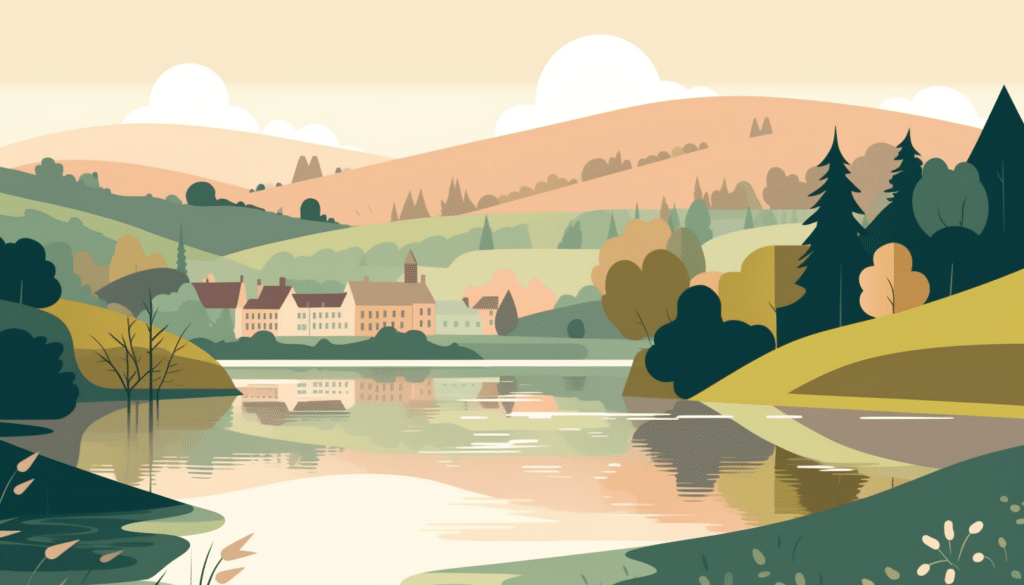Lower Bavaria has lots of charms of its own including a world-famous medieval wedding pageant and a town renowned as a center of religion which has characterized Bavaria for 800 years. There is also a city situated at the confluence of three rivers which is an international waterway. Asparagus beds and towering hops frames are found here, too. And dozens of wonderful, local beers unknown outside of the immediate area. Lower Bavaria certainly merits a visit.
The Landshuter Hochzeit or Landshut Wedding is a full-tilt medieval festival and reenactment of the wedding between Prinz Georg of Bayern and Princess Hedwig of Poland in 1475. Replica costumes, jousting tournaments, two lengthy parades, and public feasting and games featuring a cast of more than 2,000 native born participants make this Landshut event exceptional. The event takes place only once every four years, with performances scheduled for late June and July of 2009 and 2013. There are 76 events in three cycles of 13 activities. Many are free, you pay only what you consume. Others request admission. Concerts, medieval plays, festive night camp games, and grandstand seating for the pageant and Tournament. Reservations can be made at Tel: +49 (0) 871 92 20 50. www.landshut.de
Of course Landshut’s world’s tallest brick church tower, Trausnitz Fortress-Castle and the Fritz Koenig Museum, the Altstadt and Neustadt Promenades, are always worth a visit to this city of 60,000 on the Isar, 30 minutes east of the Munich Airport.
Southeast of Landshut is Altoetting, famed for its splendid Chapel of Mercy housing the Black Madonna icon. This is the heart of orthodox Bavarian Catholicism. Altoetting, like Lourdes, Fatima, Campostela, and Loreto, is one of Catholicism’s most important pilgrimage sites, attracting more than a million faithful annually. A huge panorama of Jerusalem during the Crucifixion must viewed. Numerous other churches and chapels in many architectural styles surround the spacious town square. There’s no rush or frenzy here. Altoetting’s Braeu Moos Bier is delicious, its output miniscule. See: www.altoetting-touristinfo.de.
Nearby are Wasserburg, a very picturesque town of Baroque houses on the Inn river, and the huge, 1.1-kilometer long, former royal castle Burghausen Castle towers over the Salzach.
Forty-minute’s drive east of Landshut is Passau, a city of 50,000 situated on three rivers – the Inn, the Ilz and the Danube. It is one of Bavaria’s very few towns with a “Riviera.” Life during the warm months has a Mediterranean flair, the Romans having settled here in 200 A.D. The narrow streets of the Old town, the cafés and restaurants, the fine Late Gothic Cathedral choir within the richly decorated Baroque Cathedral, and the extraordinary glass museum encompassing glass-making from 1780-1935 housed in the “Wild Man” mansion are one of a kind.
Lounging on the shores, looking down from the hillsides, Passauer Loewenbraeu or Hackl-Braeu drinkers or lovers of Austrian wines sip their favorites and view Bavaria’s Gateway to the World: the Danube River. There are cruise-ship docks and terminals, Passau being the first or last German port on Europe’s prime inland waterway. Increasingly popular river cruises bring hundreds of thousands of guests to and through Passau as they traverse the Rhine, the Main, the Danube and all their tributaries. Destinations include Greece, Turkey, Russia, Bulgaria, Rumania, Serbia, Slovenia, Hungary, Austria, Germany, Switzerland, France, and Holland, all the way from the Ionian and Black to the Atlantic and North seas. See www.passau.de


























